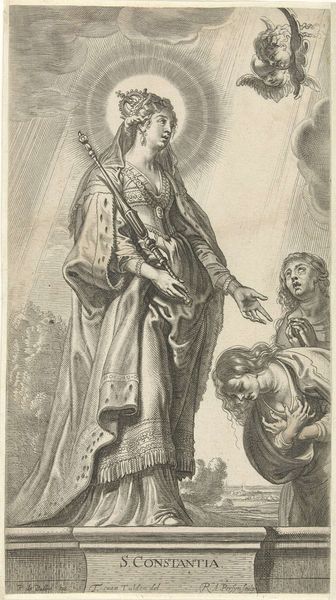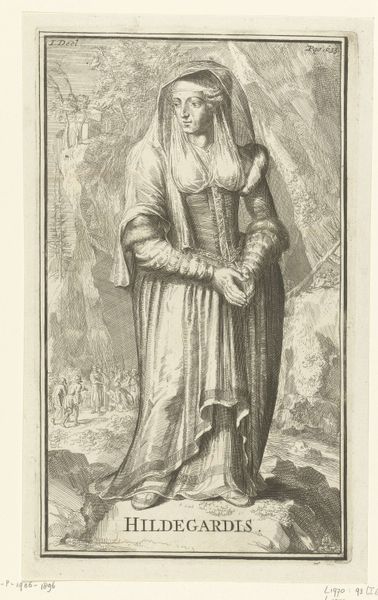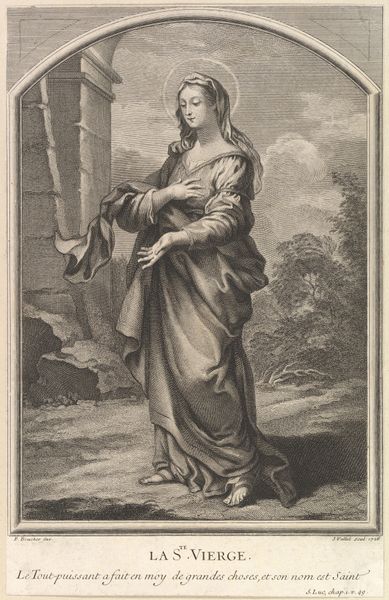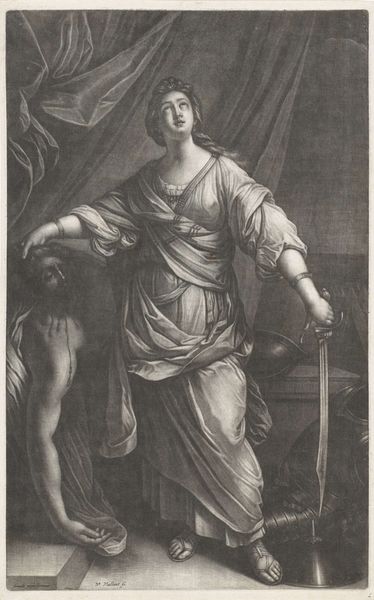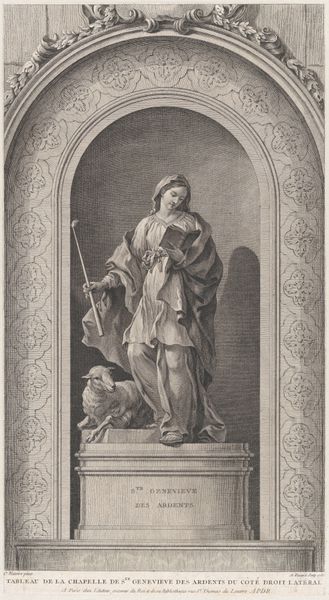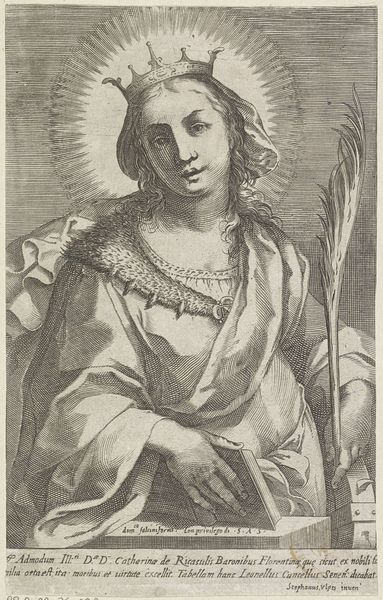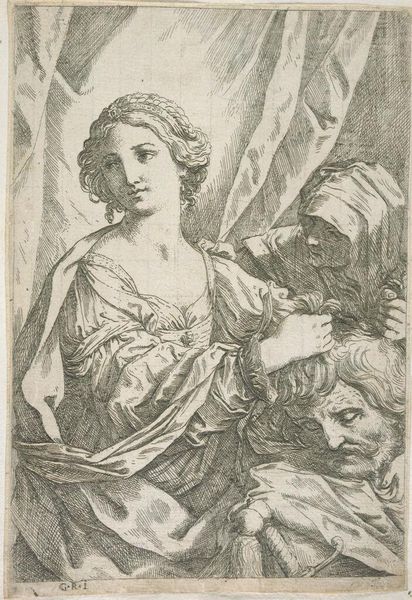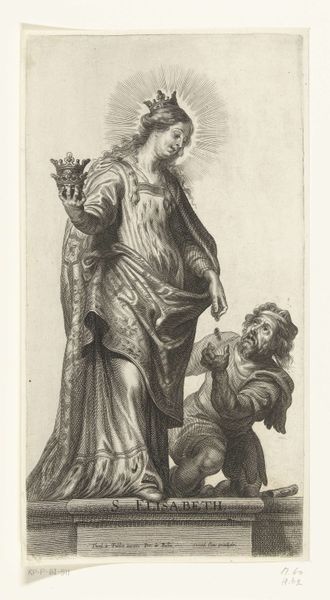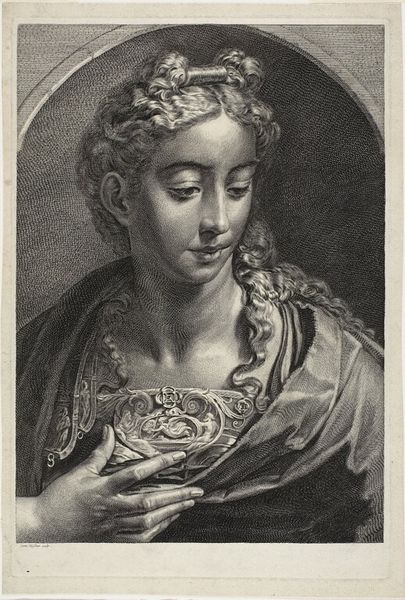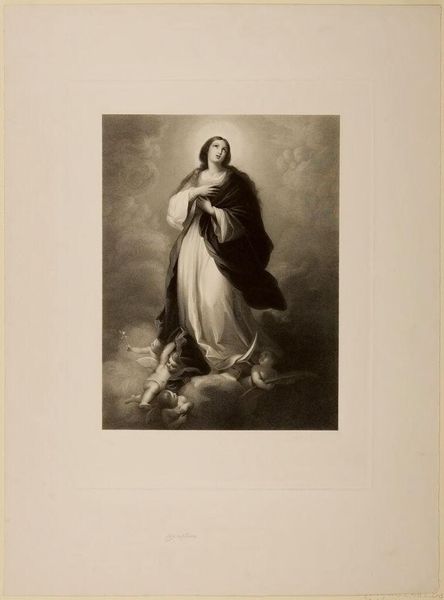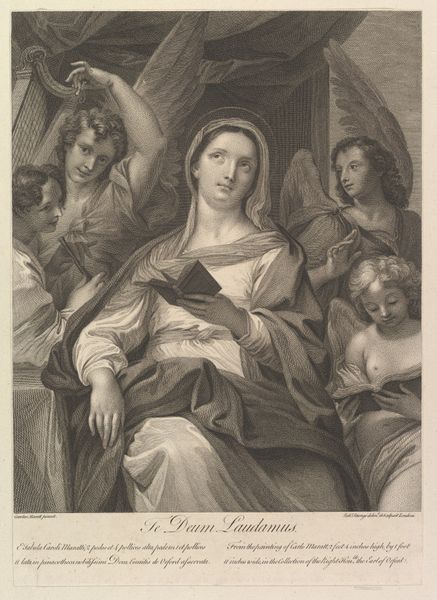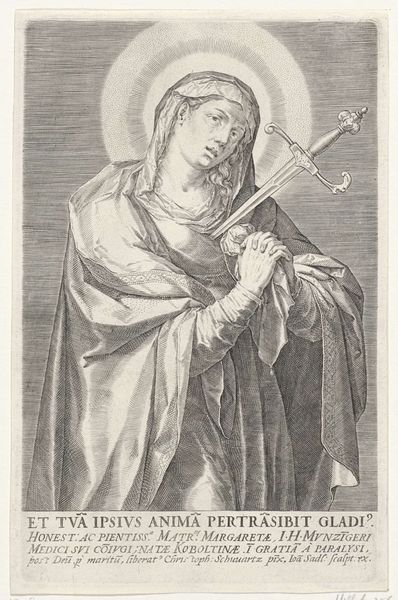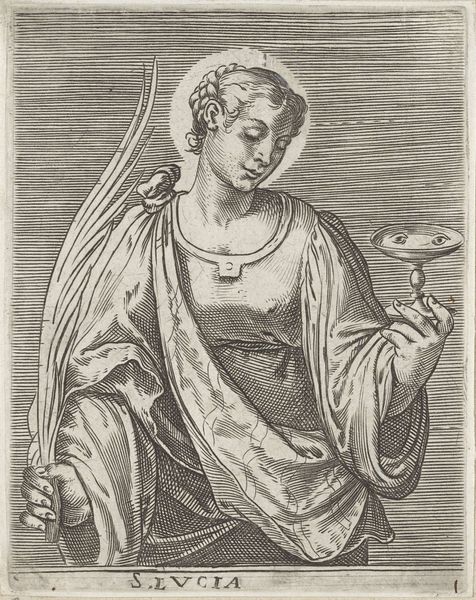
painting
#
portrait
#
venetian-painting
#
allegory
#
painting
#
figuration
#
oil painting
#
history-painting
#
italian-renaissance
#
portrait art
Copyright: Public Domain: Artvee
Curator: This painting, likely dating from between 1585 and 1595, presents Saint Lucy and a donor, an oil on canvas attributed to Paolo Veronese. There’s an intense drama captured, don’t you think? Editor: Absolutely. There's a sense of weighty reverence, almost melancholic, despite the vibrancy of the color. She appears caught between worlds. Who was Saint Lucy and what does her image tell us about women's power, agency, and constraints? Curator: Lucy is a saint often invoked against afflictions of the eyes. Her most potent symbol, unsurprisingly, is a pair of eyes, sometimes carried on a dish, though in this interpretation she bears a palm frond, the symbol of martyrdom, which may reference her historical execution by sword, along with a slender, sharp instrument. Editor: A pointed absence, that. By excluding the typical devotional imagery— the dish of eyes, her brutalization— Veronese shifts our focus to the relationship of this holy figure and the kneeling donor. He looks up with such beseeching, pious energy. It strikes me as being all about legitimizing power. The patriarchy working at its finest: an image of virtuous piety, backed up by holy violence, yet sanctified, ironically, by the gaze and the power of sight. Curator: He is positioned firmly beneath her gaze, rendered small not only in comparison to Lucy but also to the dramatic architecture that is painted so expressively in the background, he needs the saint’s symbolic power. But this reading could diminish Lucy to a simple tool. She may also be seen as offering protection, and thus wielding symbolic authority in the face of inevitable worldly suffering and social inequities. It has been interpreted, perhaps somewhat simplistically, as representing “divine light.” Editor: And as with every symbolic framework, some inevitably benefit, and some are inevitably cast into shadow. To dismiss the sociopolitical context in this work— who profits from and reproduces these very familiar and persuasive image schemas —would, in my opinion, be negligent. Even an artist of Veronese’s status and undeniable talents worked under constraints and influences beyond aesthetic ones. Curator: Precisely. These powerful icons were so meaningful, after all, precisely because they intersected faith, social status, and so much more. Editor: They become historical touchstones where visual culture reinforces power dynamics of gender and faith, ripe for exploration in the present day.
Comments
No comments
Be the first to comment and join the conversation on the ultimate creative platform.
